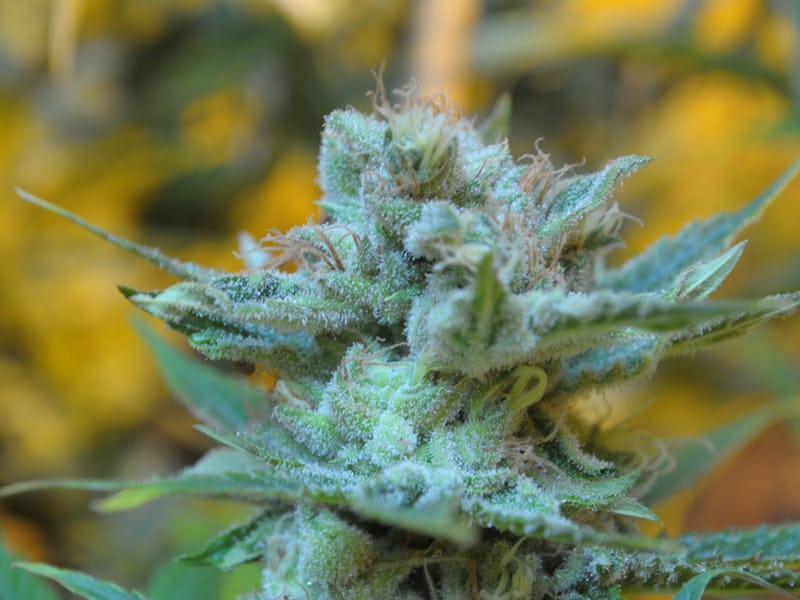What Is the Most Powerful Weed Strain?
Lots of contenders for the throne.

In a role reversal, American weed has grown so potent, some of it is being smuggled across the border, into Mexico.
With 29 U.S. states having legalized marijuana, either recreationally, medically, or both, the industry is becoming formalized, growers are endeavoring to become more energy-efficient, and the manufacturing process is becoming standardized. Unsurprisingly, this has led competitors to develop plants that are blanketed in THC crystals — the chemical that enters your brain and attaches to the receptors responsible for perception, thinking, pleasure, and a host of other higher-level functions.
The federal government maintains that cannabis plants with a THC percentage of over 15 percent is “unusual,” but growers today are reaching into the low to mid 30 percent range. A question that looms large is if having such a high THC content even matters; these super-strains may saturate your brain with so many THC molecules that they become surplus chemicals floating around, with no empty neural receptors to bind to.
For those interested in finding (or avoiding) these ultra-potent strains, the 2017 High Times Cannabis Cup results are a good place to start, as it’s an organized competition. “Godfather OG” won for THC levels, at a staggering 34.04 percent. Coming in a close second was a medical hybrid called “Super Glue,” at 32.14 percent.
The cannabis and culture site Herb, however, says that the strongest strain of 2017 is Manali West’s “Nova OG,” which may be “the highest testing cannabis strain in history.” Herb makes a fair claim; although their testing procedures were not detailed, “Nova OG” came in at over 35.6 percent in THC potency.
Excuse me, do you sell any weed that isn't extremely potent?
The truth is, it’s unknown how much more potent weed is now than it was in the 1960s. The methods used for testing THC were different then, with a process called gas chromatography, which required heating up the weed and thereby killing some of the product. The federal government has been testing the strength of different marijuana strains for 40 years at the National Institute on Drug Abuse’s Potency Monitoring Program, but its measurements have depended on what the feds could get their hands on, not necessarily a representative sample of what the nation was smoking. In 2010, researchers in the Journal of Forensic Sciences candidly admitted that “the change in cannabis potency over the past 40 years has been the subject of much debate and controversy” and that “the program has strived to answer this cannabis potency question, while realizing that the data collected in this and other programs have some scientific and statistical shortcomings.”
Like all agriculture, growing weed is becoming more scientific, often cultivated under specific lighting and temperature circumstances, so it’s logical to assume that there is typically more THC in these industrially-produced plants than the plants of 50 years ago — regardless of the unknowns of past strains. Different growers may contend that they grow the dankest weed, but regardless of the veracity of the claims, there’s a good chance it’s incredibly potent, perhaps historically so. Embrace the high or beware of it — whatever be your pursuits.